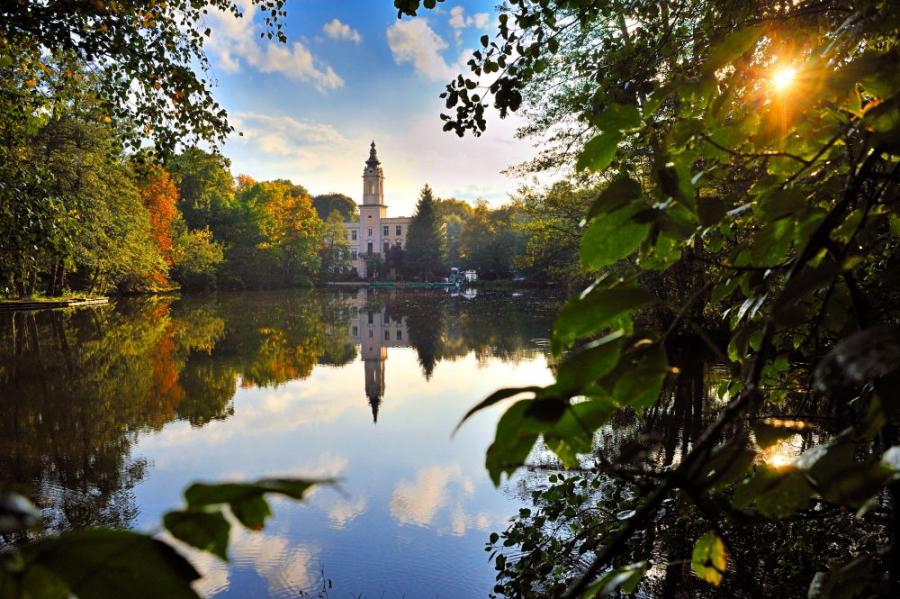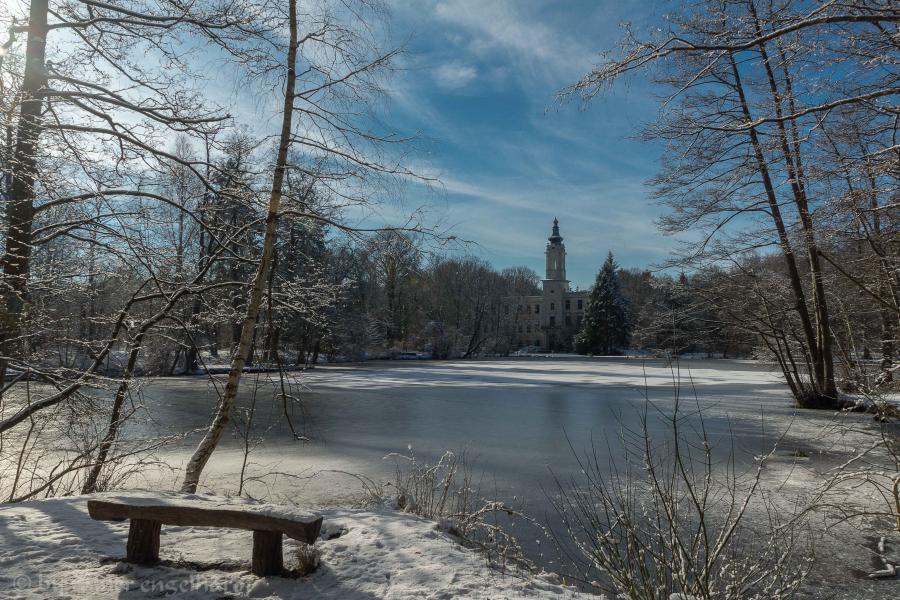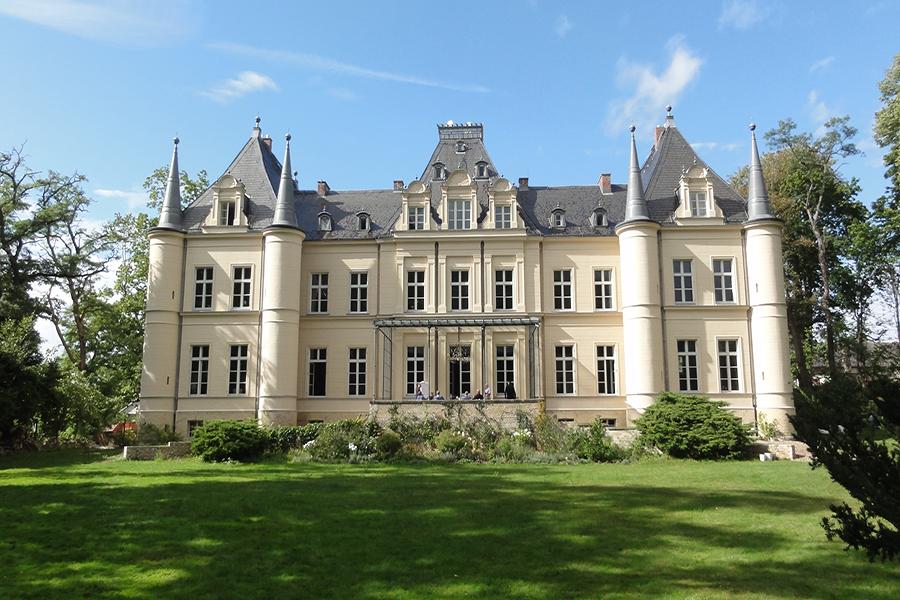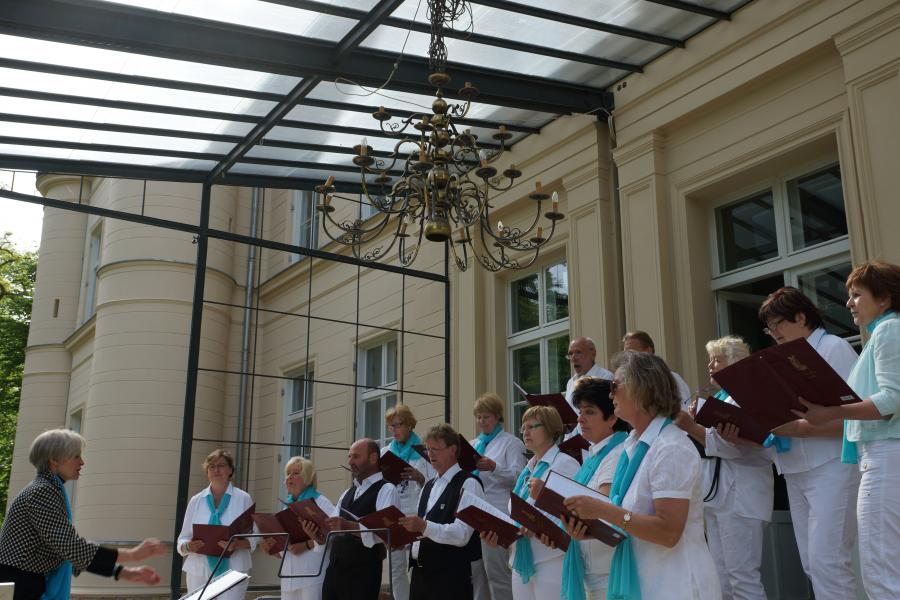Palaces
Magical Wandlitz
Palaces always have their own special charm – and not just for little fairies and princes. Beautiful Wandlitz is home to two historic residences which bring a hint of the past into modern-day life. Even back then, palace owners made sure to build their sanctuaries in special locations, so as to enjoy nature and life.


Schloss Dammsmühle in the urban district of Schönwalde
On the way to Lake Mühlenbecker See, some 2.5 km from Schönwalde train station, ‘Schloss Dammsmühle’ lies hidden in the forest. It was built as a palace by Berlin leather manufacturer Peter Friedrich Damm in 1755. Elisabeth Christine, a former queen of Prussia, is said to have visited here many times from her palace in Niederschönhausen. When Berlin bon vivant Adolf Wollank bought the property in 1894, he had the palace rebuilt in neo-baroque style, and held lavish parties there. An Oriental dancing pavilion floating in the millpond was particularly famous. The palace frequently changed hands after Wollank’s death. Brit Harry G. Hart, director of the Unilever group, brought new splendour to it from 1929 onwards. But when Hart was forced to leave Germany with his Jewish wife, the Nazis turned Dammsmühle into an outpost of the Sachsenhausen concentration camp.
As of 1945, it was used by the Red Army troops, who then handed the palace over to the Ministry for State Security (Stasi) in 1959. The ministry initially organised children’s holiday camps here, before later using the palace as a guesthouse and hunting lodge. Dammsmühle was privatised after 1990. As early as the 1920s, it and its magical surrounds were used as sets for a number of UFA films. And this tradition was continued in 1990 with the TV series Haus am See with Hildegard Knef. Having lain empty for years, the neo-baroque palace is set to be restored as of 2018.
Schloss Lanke
Schloss Lanke is situated in the urban district of Lanke, near Lake Hellsee. The unusual building was originally constructed as a baroque manor house in the 17th century. Then in the mid-19th century, its owner at the time, Count Friedrich Wilhelm von Redern, had it extended in French Renaissance style, and the adjacent parklands were redesigned as an English country park, based on plans by Peter Joseph Lenné. Over the following decades, the stately property’s tenants and owners changed just as much as the purposes for which it was used. Among other things, it served as a military hospital, as a Russian commander’s office after World War II, and as a hospital and nursing home during the GDR days. Many years of lying vacant took their toll on the palace’s building fabric.
In 2006, a private community of owners of the architectural gem banded together to meticulously restore it. Since then, it has been gleaming with renewed splendour as a private residence, holiday accommodation, function venue, and stage for cultural events. The municipal registry office holds a number of weddings in the garden hall.







